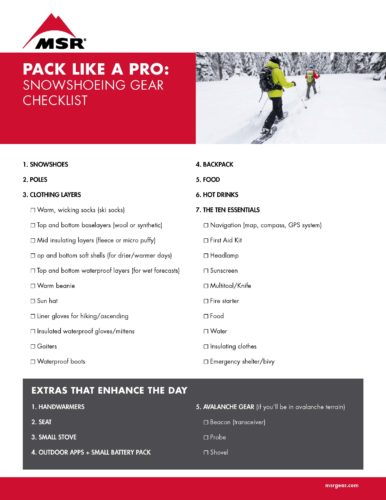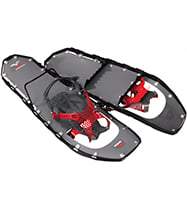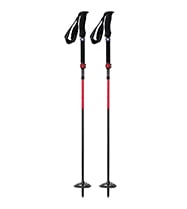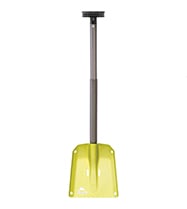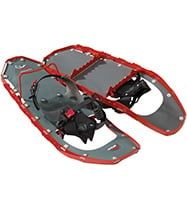What to Take Snowshoeing: Gear Checklist
Whether you’re new to snowshoeing or a bonafide winter hiker, it’s important to have a solid checklist of gear and supplies for the day. What you choose to pack will depend on where you’re headed, as well as the weather and how long you’ll be out—just a few hours, the whole day or overnight. We’ve previously covered winter camping gear. So here, we’ll look at the items you need for a successful day hike in winter mountains.

Snowshoes
First things first: your flotation devices. Whether you’re walking along your flat local trails or hiking in backcountry terrain, snowshoes make snow travel easier and more efficient. All MSR snowshoes offer advanced traction for enhanced safety and grip, as well as secure, comfortable bindings. Choosing the right size and model depends on your weight, the snow conditions and the type of terrain you’ll be in. Use our guide to find the perfect pair.
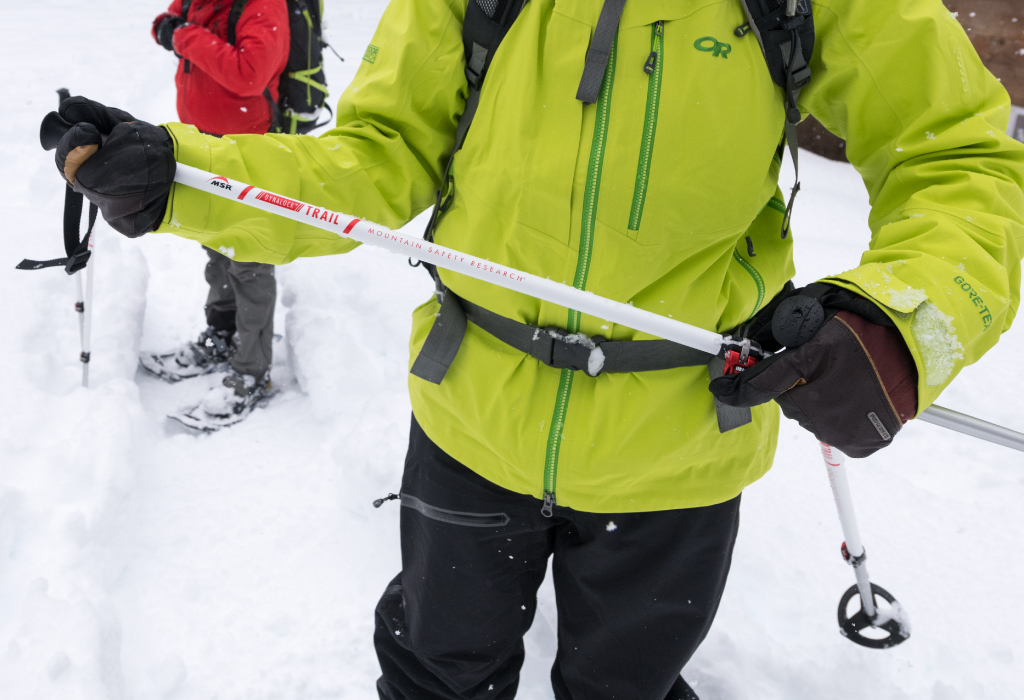
Poles
Poles increase your stability and efficiency on uneven terrain, which saves you precious energy and increases your safety margin. On long hikes, comfortable pole grips go a long way. MSR’s Ascent and Explore pole models feature extended foam grips that allow you to “choke down” when sidehilling in steeper terrain. All MSR poles feature our easy DynaLock adjustment locking mechanism, which offers tool-free tensioning, meaning you can tighten its clamping force on the fly to ensure your poles stay locked and rock-solid beneath you.
Clothing Layers
Finding the right clothing strategy may take several outings to master as you learn which types of layers work for you. Make sure to check the day’s forecast and always err on the side of packing an extra layer of warmth. Here are the basics of dressing for a winter adventure:
- Warm, wicking socks (ski socks)
- Wool or Synthetic top and bottom base layers (Pro Tip: Take an extra top layer to change into if you sweat a lot. A quick, cold change and you’ll be so grateful you did!)
- Mid insulating layers (fleece or micro puffy)
- Top and bottom soft shells (for drier/warmer days)
- Top and bottom waterproof layers (for wet forecasts)
- Warm beanie
- Sun hat
- Liner gloves for hiking/ascending (plus a spare set to swap out wet gloves)
- Insulated waterproof gloves/mittens
- Gaiters
- Waterproof boots
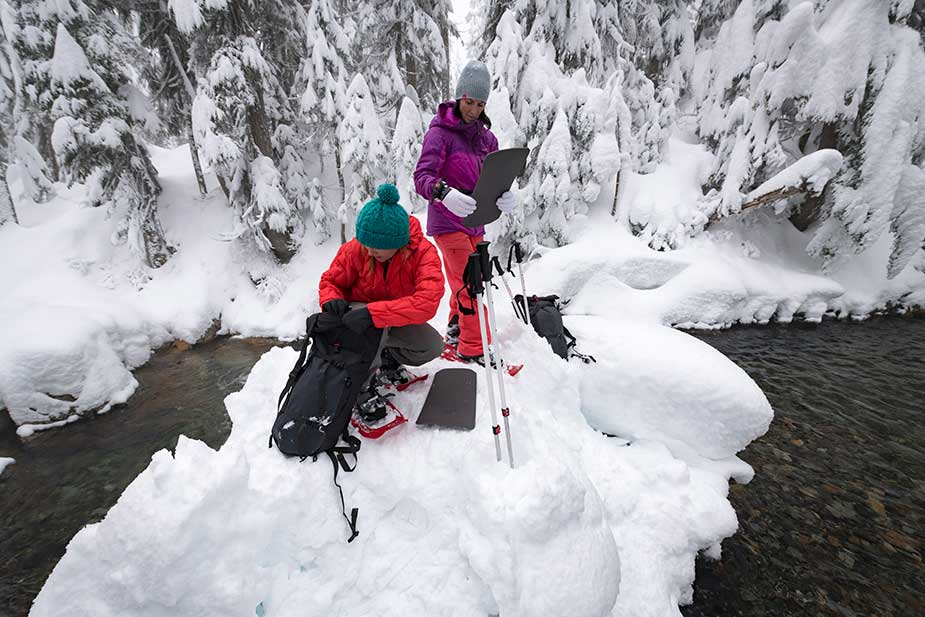
Backpack
Even a short hike benefits from a pack for stashing extra layers and food. If you’re starting from scratch with all this gear, consider MSR’s All-in-One Snowshoe Kits. An excellent value, they set up you with high-quality snowshoes, poles and a fully-featured pack, which includes a removable foam seat, an internal zippered pocket and hydration compatibility.
Food and hot drinks
On a cold day, your internal furnace needs more calories to keep burning. That’s when an insulated bottle of something hot and delicious offers salvation. To help fuel you all afternoon, check out our list of warm, hearty trailside snack ideas.
Also remember, on icy days, the water in your hydration drink tube can freeze, so water bottles are a better choice in sub-freezing temps.
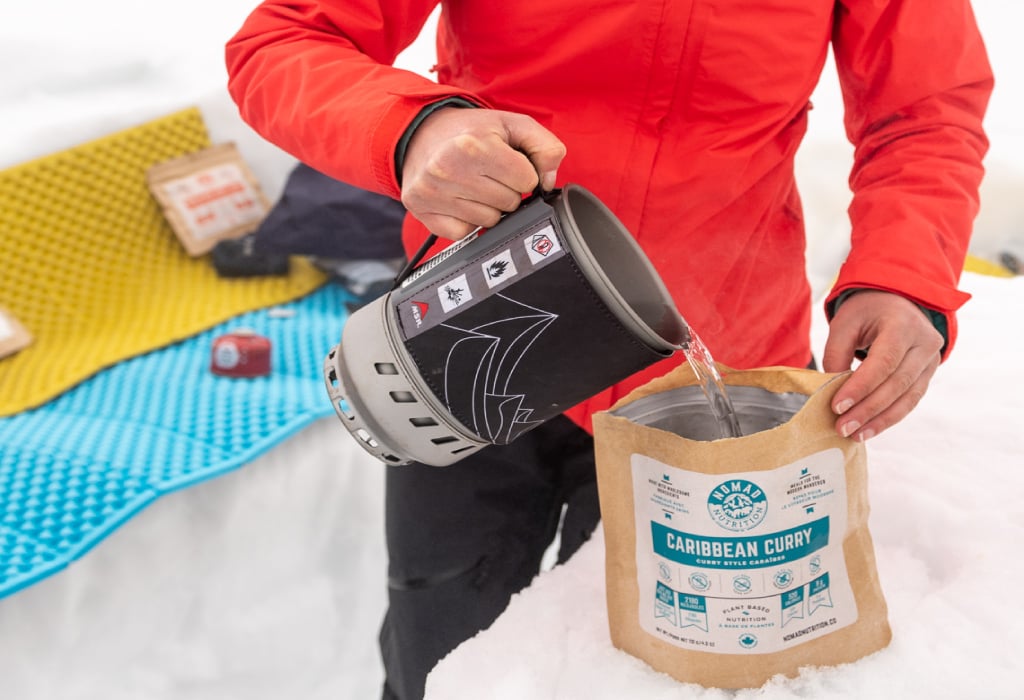
The Ten Essentials
Any time you head into the backcountry, the Ten Essentials should be in your pack. Think of them as a mandatory safety toolkit for adventures, preparing you for all types of scenarios.
- Navigation (map, compass, GPS system)
- First aid kit
- Headlamp
- Sunscreen
- Multitool/Knife
- Firestarter
- Food
- Water
- Insulating clothes
- Emergency shelter/bivy
4 Extras that enhance the day
1. Hand Warmers
Insurance against frozen fingers and toes, hand warmers can save the day. As you hike, your body generates heat, making it easy to sweat inside your gloves. When you stop to rest, that sweat cools, creating an icebox for your hands. Pack a set of hand warmers and hike through the day with confidence.
2. Seat
Sitting on snow is a surefire way to get wet and lose body heat. That’s why an ultralight foam cushion is a smart choice. A Therm-A-Rest® Z-Lite SOL features a reflective lining for warmth and its added length is perfect for prepping snacks.
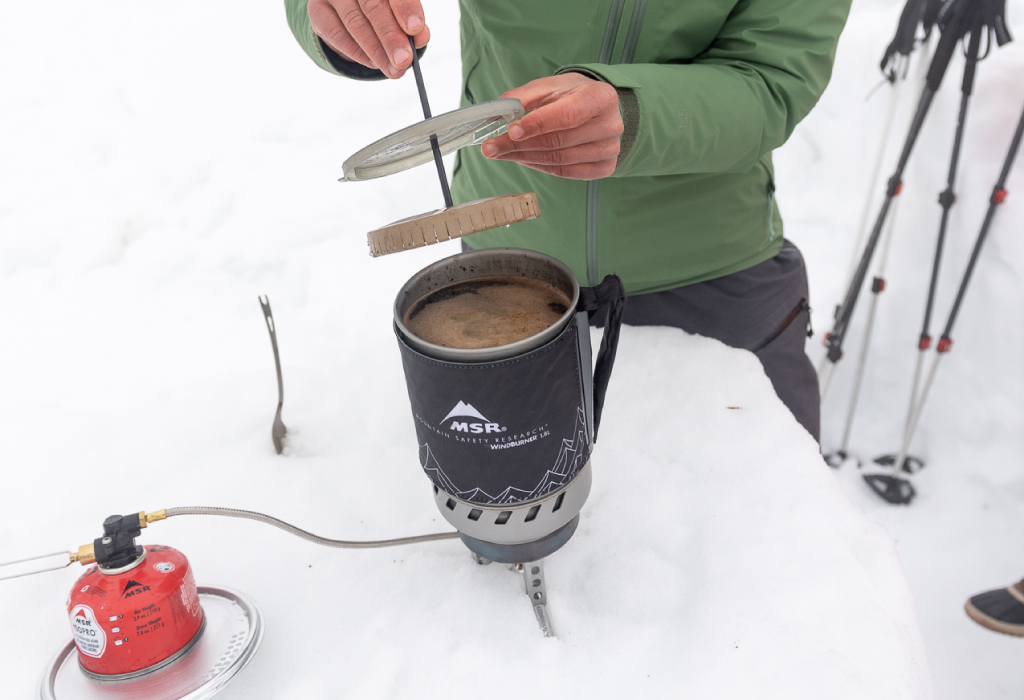
3. Small Stove
The ability to whip up a warm, steaming trailside snack is a game-changer. The ultralight PocketRocket Deluxe stove features a built-in pressure regulator for cold-weather performance, or pack a rapid-boiling system like the WindBurner Duo which adds wind-resistance for stormy days and is a rapid snow-melting powerhouse should you need to refill water bottles.
4. Outdoor Apps + Small Battery Pack
These days, outdoor apps do it all—from identifying the surrounding peaks to ensuring you’re still on route. Keep in mind that cold affects your phone’s battery so if you plan to use apps, bring a small battery pack. Here’s our list of the Ten Must-Have Apps for the Outdoors.
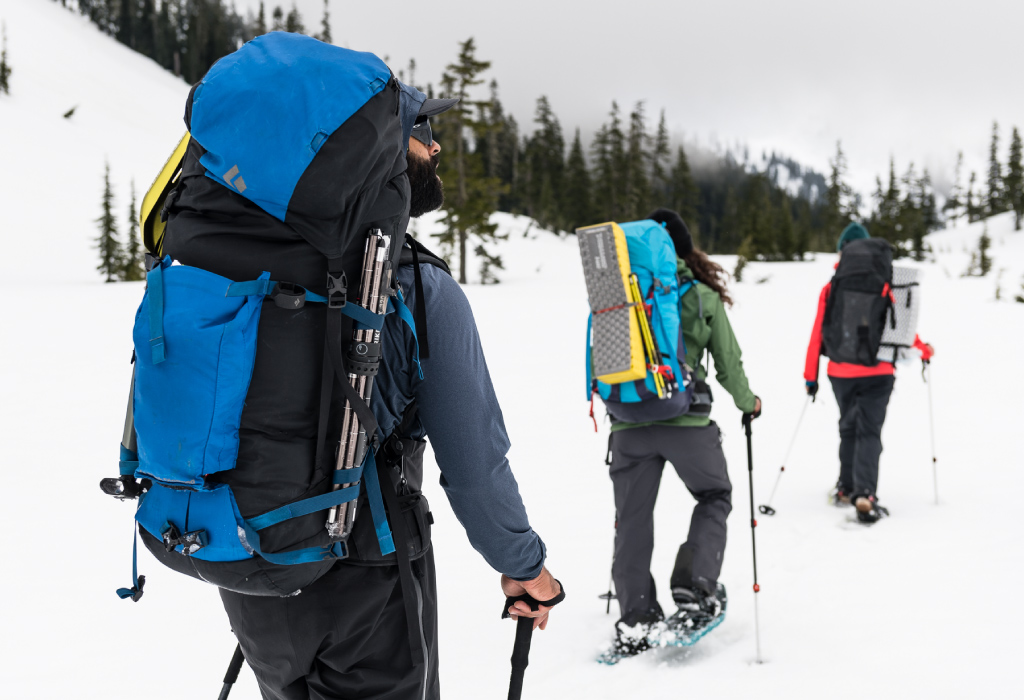
Will you be in avalanche terrain? Pack the right safety gear.
Before you head out, it’s important to know whether your snowshoe trails will take you through avalanche-prone areas. Not sure? Read our beginner’s guide to avalanche safety.
If there’s any chance they will, make sure to pack this mandatory safety gear—and know how to use it by taking a class.
Now that you’re ready to get out there, download our gear checklist and pack like a pro:
- Choosing the Right Snowshoes for Every Adventure
- 7 Winter Backpacking Tips to Get You Started
- Best Winter Camping Gear from MSR
Updated. Originally Published December 10, 2019.

